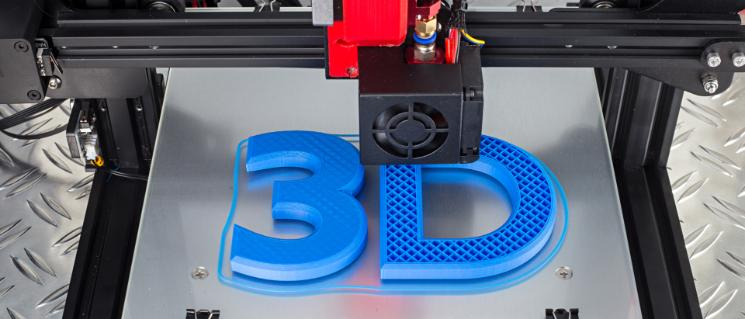How to Choose the Best Internal Standard?
Selecting an appropriate internal standard is critical in LC-MS bioanalysis. It significantly affects the accuracy and reliability of analytical results. Internal standards compensate for variations in sample preparation, injection volume, and detection, ensuring consistency throughout the process. This guide provides invaluable insights into choosing the optimal internal standard, focusing on key criteria such as structural similarity, chromatographic behavior, and ionization efficiency. We outline clear steps for the selection process and identify common pitfalls. By the end of this blog, you will be well-equipped to make informed decisions, enhancing the credibility and integrity of your bioanalytical measurements.

Key Criteria for Selecting an Internal Standard
Structural Similarity to Analyte
A suitable internal standard should closely resemble the analyte structurally. Structural similarity ensures that both the analyte and the internal standard behave similarly under analytical conditions. This similarity helps in compensating for any inherent variability during the analytical process, thereby enhancing the precision and accuracy of the measurements. For instance, isotopically labeled versions of the analyte are often considered ideal, as they provide almost identical chemical properties without interacting with the analyte itself. However, when such options are unavailable, selecting an alternative compound with a similar functional group or backbone structure could yield satisfactory results. Structural similarity helps mitigate discrepancies and distinguishes systemic errors from real fluctuations in analyte levels.
Chromatographic Behavior
The internal standard should exhibit chromatographic behavior akin to the analyte. This similarity ensures that both compounds are affected similarly by the matrix and other conditions during the separation process. Choosing a compound with parallel retention time and peak shape helps in accurately quantifying the analyte, as this minimizes differential behavior resulting from differences in chromatographic conditions. When the chromatographic profiles are closely aligned, the internal standard effectively normalizes variations in retention time and peak area, leading to enhanced analytical precision. Deviations in chromatographic behavior between the analyte and the internal standard can introduce significant biases, potentially compromising the validity of the results.
Ionization Efficiency
Ionization efficiency is another critical factor when selecting an internal standard. The internal standard should respond similarly to changes in ionization conditions as the analyte. This ensures that any variations in signal response due to changes in matrix composition or ionization conditions are uniformly reflected in both the analyte and the internal standard responses. Isotopically labeled standards typically offer parallel ionization efficiencies, thus serving as effective controls. If such standards are unavailable, compounds with similar ionization tendencies can be considered. Inadequate ionization matching can lead to imprecise quantification and skew the understanding of the analyte’s true concentration.
Steps to Choosing the Best Internal Standard
Define Analytical Goals and Methods
Begin by clearly defining the analytical objectives and the methods to be employed. Understanding the purpose of the analysis, the nature of the analyte, and the complexity of the sample matrix is essential. Determine the sensitivity, specificity, and linearity required for your analysis. Each of these factors will influence what constitutes an appropriate internal standard. For instance, if high sensitivity in a complex biological matrix is needed, isotopically labeled standards might be ideal. Clarifying these goals helps in aligning the selection of the internal standard with the broader analytical strategy, ensuring it adequately compensates for potential analytical challenges.
Evaluate Candidate Compounds
Screen potential candidates by evaluating their suitability based on the established criteria. Assess structural similarity, chromatographic behavior, and ionization efficiency of the candidates about the analyte. Utilize databases and literature to gather information on potential compounds. Perform small-scale pilot experiments to test the performance of these candidates under your method conditions. This empirical evaluation aids in identifying the most compatible internal standard, balancing practicality with performance. Documenting these evaluations facilitates a rational selection process, avoiding subjective biases that could impair analytical outcomes.

Validate Performance in Real Samples
The final step in the selection process involves validating the performance of the chosen internal standard using real samples. Conduct experiments to verify that the standard effectively compensates for variability in sample preparation and analysis. Assess its stability, reproducibility, and reliability across different samples and conditions. Ensuring it withstands the matrix effects and faithfully reflects analyte behavior is crucial. This validation step confirms the internal standard’s efficiency in real-world scenarios and not just theoretical suitability, thus solidifying confidence in the obtained analytical results and providing robustness to the entire bioanalytical process.
Common Mistakes to Avoid When Choosing Internal Standards
Using Non-Isotopically Labeled Compounds
Using non-isotopically labeled compounds as internal standards can pose significant challenges. These compounds might not mimic the analyte’s behavior accurately, leading to substantial discrepancies. Without isotopic labeling, the internal standard may not compensate effectively for matrix effects or ionization variations. This can cause inaccuracies in quantification and potentially erroneous interpretations of the data. If isotopic analogs are not feasible, it is crucial to ensure that the selected alternative still behaves similarly during all phases of the analysis. Avoiding this mistake means acknowledging the complexities of the matrix and method, and actively seeking the most compensatory option available.
Ignoring Matrix Effects
Overlooking matrix effects when selecting an internal standard is another common oversight. Matrix components can influence the analyte and internal standard differently, leading to distorted analytical measurements. It is vital to consider how the internal standard will interact with the matrix present in real samples. Ensure the selected compound demonstrates consistent performance regardless of sample complexity. Ignoring matrix effects can diminish the accuracy, reliability, and reproducibility of your analytical results, making it crucial to incorporate this consideration into the selection and validation process of internal standards.
Selecting Unstable Compounds
Choosing unstable compounds as internal standards can undermine the entire analytical process. An unstable compound may degrade over time, compromising the consistency and security of the results. Factors such as temperature, light exposure, and sample storage conditions can affect stability. Conduct stability tests and shelf-life studies to assess the resilience of potential internal standards under expected analytical conditions. Ensuring stability is key to maintaining consistent internal standard concentrations, leading to more reliable compensations for variability and enhancing the integrity of the bioanalytical measurements over time.
Conclusion
Choosing the correct internal standard for LC-MS bioanalysis is a crucial step in achieving accurate and reliable results. By prioritizing factors such as structural similarity, chromatographic behavior, and ionization efficiency, practitioners can select standards that effectively compensate for variability. Following structured steps—defining analytical goals, evaluating candidates, and validating in real samples—provides a systematic approach to selection. Being aware of and avoiding common mistakes ensures a more robust analytical process. This comprehensive guide serves as an indispensable resource, guiding you in making informed decisions that enhance the precision and credibility of your bioanalytical endeavors.
Copyright © 2023 guideforests.com. All rights reserved.







